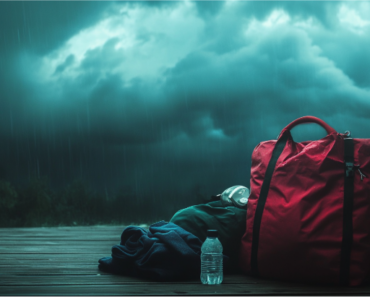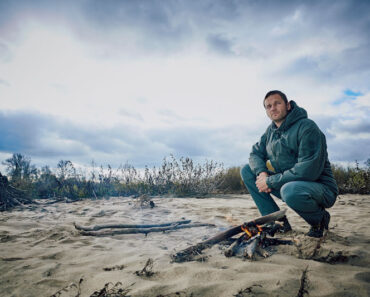Winter is usually magical but can also unforgiving at times. In December, as snowstorms, freezing rain, and power outages threaten, preparing your home for winter storms is an essential task you shouldn’t ignore. Completing your winter storm home preparation checklist shouldn’t overwhelm you. By following some practical tips, you can protect your family from the season’s elements.
Winter Storm Home Preparation Checklist: Keep Your Family Safe and Warm
Here’s a straightforward, step-by-step guide to winter storm home preparation. ensuring you stay cozy, safe, and self-sufficient no matter the weather.
1. Seal Your Fortress: Insulate Like a Pro
Cold winds can sneak into the smallest gaps in your home’s defenses, so let’s make sure to keep them sealed:
- Windows & Doors: Check every window and door for drafts. Use caulk for smaller gaps and weather-stripping for larger ones. It’s an easy, quick fix that can make a huge difference.
- Attic & Basement: seal your attic and basement properly, as heat loves to escape through uninsulated spaces!
- Outlets and Switch Plates: Believe it or not, cold air can enter via wall outlets. Install foam gaskets behind them to block the drafts.
By tightening up these spaces, you’ll keep the cold out and save on your energy bills!
2. Stock Up: Essential Supplies to Keep on Hand
Nothing brings peace of mind like a well-stocked supply shelf. Here’s what every winter warrior should keep close by:
- Non-Perishable Food: Think canned goods, jerky, dried fruits, nuts, and other items that can last without power.
- Water Supply: Aim for a gallon of water per person, per day, for at least three days. Allocate some extra stock for your pets, too!
- Light Sources: Stock up on flashlights, lanterns, and, of course, batteries. Battery-powered LED lamps are a solid choice when it’s dark or the power is out.
- Backup Heat: Propane heaters set up in a safe, ventilated area are worth the investment. If you prefer a wood stove for heat, make sure to stock up on enough dry firewood to last you a few days.
3. Power Up: Backup Solutions for Electricity
Winter storms often mean power outages. Without a backup plan, you’ll have to stay in the dark for a long time. Here are a few suggestions:
- Portable Generator: A small backup power supply can keep essential items like refrigerators, phones, and a few lights running. Make sure to install your generators outdoors and away from windows to prevent residents from getting carbon monoxide poisoning.
- Battery Bank: Rechargeable power stations are a quiet, indoor-friendly option to keep phones and laptops powered on.
- Solar Chargers: Though slower, solar chargers are very useful, especially for keeping smaller electronic devices powered.
Invest in a good quality surge protector to protect devices from current spikes when normal power returns.
4. Be a Plumbing Pro: Protect Your Pipes
Frozen pipes are the ultimate in inconvenience. One burst pipe is more than enough to flood your home. Here’s how to keep your home safe:
- Insulate Exposed Pipes: Wrap pipes in the basement, attic, or any other unheated areas with pipe insulation. If you don’t have that, old towels will do for the meantime until you can get the real insulators.
- Let Faucets Drip: When temperatures drop, open the faucets connected to vulnerable pipes a little so the drip slowly. This small trick keeps water flowing and helps prevent the pipes from freezing.
- Open Cabinet Doors: If pipes are located under the sink, open the cabinet doors to let warm air circulate.
Quick tip: Keep a hairdryer handy if a pipe starts to freeze. Gently warming it prevents it from bursting altogether.
5. Check Your Chimney and Heating Systems
Fireplaces and heating systems are lifesavers during winter storms, but they need proper maintenance to safely work:
- Chimney Sweep: Make sure your chimney is clean and clear. An annual sweep is a must if you use a wood-burning fireplace.
- Heating System Tune-Up: Have a professional inspect and tune up your heating system before the deep freeze sets in. It’s better to catch issues now than to wait for a frigid night.
- Carbon Monoxide Detectors: Place CO detectors near sleeping areas and test them regularly. Winter is when they’re most needed!
6. Create a Cozy Shelter Zone
When your home loses power, focus on keeping one main room warm and comfortable as possible. This will be the family’s temporary shelter space:
- Choose an Interior Room: To reduce heat loss, pick a room with no exterior walls that are in contact with the cold outside.
- Seal It Off: Block drafts by hanging blankets over doorways and windows.
- Use Sleeping Bags & Blankets: Insulated sleeping bags trap heat well and keep you toasty even in chilly rooms.
This little sanctuary will keep everyone warm even if the heat goes out for an extended time.
7. Vehicle Survival Kit: Just in Case
Getting stranded while traveling in winter is no joke. Make sure your car is ready for anything by packing these essentials:
- Jumper Cables and Tow Rope: Cold weather can kill your battery, so be prepared to get jumpstarted or towed if necessary.
- Extra Clothes and Blankets: Warm layers can make a big difference if you’re stuck out in the cold.
- First Aid Kit, Food, and Water: Stock some snacks, water, and basic first aid supplies. It’s better to have them and not need than vice-versa.
A winter-ready car kit can be a lifesaver—literally.
A Prepared Home is a Safe Home.
Winter’s beauty comes with challenges, but with proper winter storm home preparation, you can face those problems head-on. Sealing your home, gathering supplies, prepping for power outages, and keeping pipes and heating systems in check, you’ll be ready for whatever December throws your way.
And don’t forget, the best part of winter prep is knowing you’ve outsmarted the storm. Let Mother Nature do her worst—you’re ready for it.
FAQs
- What supplies should I have for a winter storm?
Stock up on food, water, flashlights, batteries, and a backup heating source. - How much water should I store for emergencies?
Store one gallon per person per day for at least three days. - How can I keep my pipes from freezing?
Insulate exposed pipes, let faucets drip, and open cabinet doors to circulate warm air. - Can I run a generator indoors?
No, always run generators outside to prevent carbon monoxide poisoning. - What kind of non-perishable food is best for winter prep?
Canned goods, jerky, nuts, dried fruit, and instant soups are excellent options. - What if I lose power for several days?
Focus on keeping one room warm, use sleeping bags, and conserve resources. - How can I tell if my heating system is safe?
Have a professional inspect it annually, and ensure carbon monoxide detectors are in place. - How do I prevent drafts from windows and doors?
Use weather-stripping for larger gaps and caulk for smaller cracks. - What should be in a winter car kit?
Essentials include jumper cables, a tow rope, warm clothes, a first aid kit, and snacks. - Is it safe to use propane heaters indoors?
Yes, if they’re designed for indoor use and have proper ventilation.
Don’t let winter catch you off guard! For more winter storm home preparation tips and resources, click here and get prepared today!






























